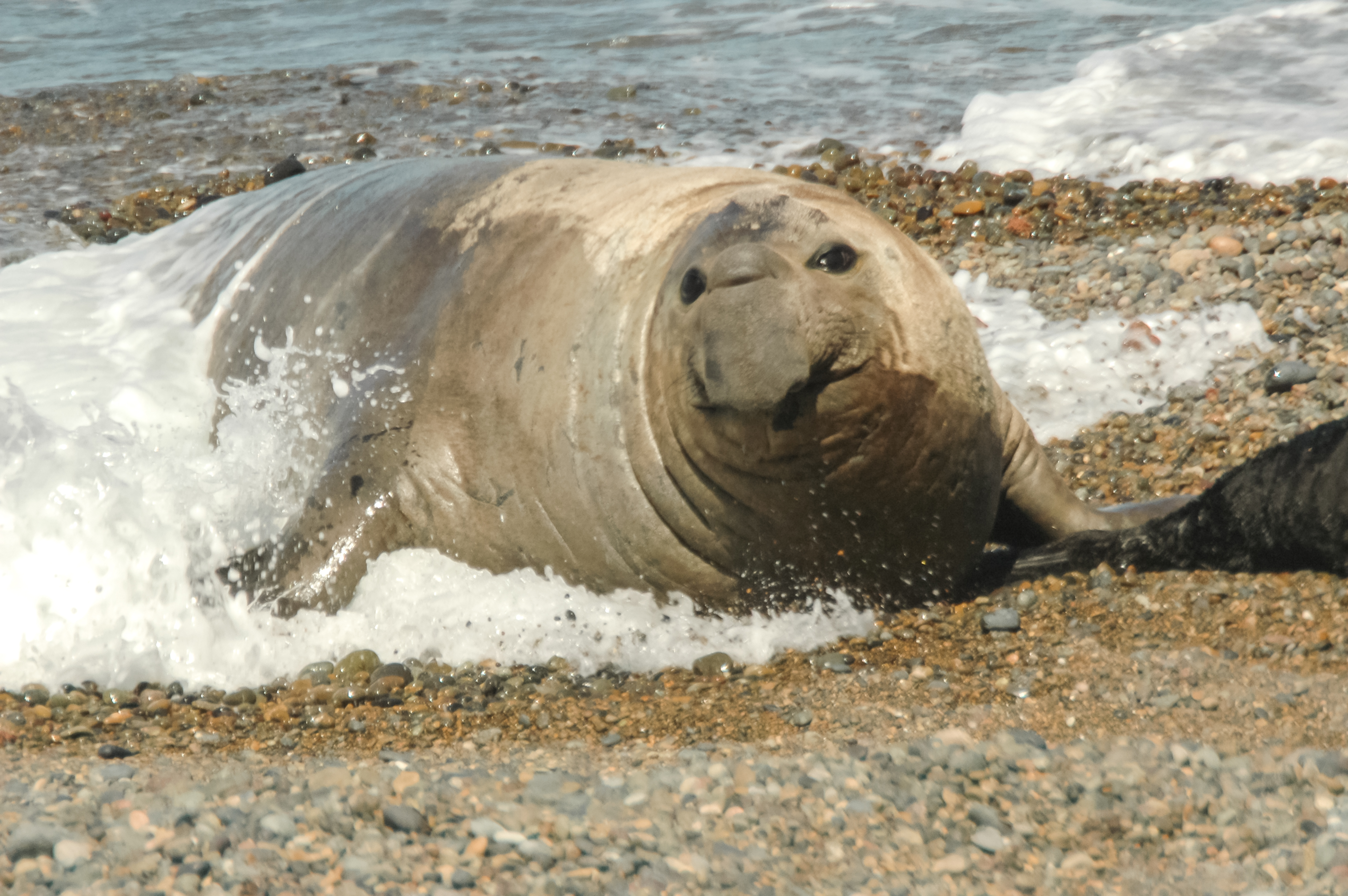A recent study found that 47 percent of breeding female elephant seals on South Georgia, home to the world’s largest population of the marine mammal, have died in two years. H5N1 avian flu is responsible for most of this catastrophe, and has now been found among the elephant seals of Heard Island, previously another stronghold of the species.
Earlier this month a paper reported that H5N1, which the authors call highly pathogenic avian influenza viruses (HPAIV), caused the population of breeding females in South Georgia’s three largest colonies to decline by 47 percent.
Observations made in 2022, before the virus reached the South Atlantic, were compared with those from 2024. Although the island has smaller colonies as well, the study’s authors calculate 53,000 females missed the breeding season if the pattern was consistent. Many of the missing females are thought to be dead, although some are suspected to have left the island early the previous year after their pup died, leading to them not getting pregnant and therefore failing to return.
Meanwhile, 97 percent of elephant seal pups died on the Argentinian Valdés following H5N1’s arrival there.
Before HPAIV hit, South Georgia hosted around 54 percent of the world’s southern elephant seals (Mirounga leonina), the largest member of the seal family, during breeding season, making the decline there of global significance. Moreover, populations of elephant seals in the Indian Ocean were already in catastrophic decline prior to the latest threat, with Marion Island’s population falling by 83 percent since the 1950s.

Heard Island elephant seals had no idea what was about to hit them.
Image credit: wayak/Shutterstock.com
That makes the situation at Australia’s Heard and Macquarie Islands particularly important, but unfortunately the news is bad there as well. The Australian Government reported the presence of H5N1 subtype 2.3.4.4b on Heard Island during the breeding season this year, leading to an unusually high number of deaths.
“Until now, Australia has been the only continent free from H5N1,” Professor Adrian Esterman of the University of South Australia told the Australian Science Media Centre (SMC). “The confirmation of H5N1 bird flu on Heard Island, a remote Australian Territory, marks an important, but not unexpected development in the virus’s global spread. Heard Island has no permanent human population, and the current findings are confined to elephant seals, with no evidence yet of impacts on penguins or seabirds. However, it is a reminder that we cannot afford complacency.”
H5N1 can be almost as lethal to humans as well. So far, it has not turned into a human pandemic because the virus has lacked the capacity for human-to-human transmission, with most infections among poultry and dairy farmers. However, a mutation that would facilitate human-to-human transmission could happen at any time, particularly if someone were infected by both H5N1 and a different flu strain simultaneously. Since the fatality rate among infected patients can be as high as 50 percent, compared to less than 1 percent for COVID-19 overall, the consequences of uncontrolled spread could be catastrophic.
The world is technically better prepared for an H5N1 pandemic than it was for COVID. Esterman noted; “Australia, along with many other countries are already stockpiling a vaccine against H5N1.” However, heightened anti-vaccine rhetoric from the networks built during the COVID pandemic mean that efforts to stop the disease could face stronger resistance.
Meanwhile, the collapse of populations of many non-human animals could have a drastic effect on ecosystems. “A major concern in Australia is the Australian sea lion, which has a population between 12–14,000, 85 percent of which are found in South Australia. Australian sea lions are one of our iconic species, and the virus could devastate the population,” said Professor Wayne Boardman of the University of Adelaide to the SMC.
Like whales, elephant seals are essential to the Southern Ocean ecosystem because they leave nutrients behind in their feces as they swim, bringing otherwise barren waters to life. Their size makes them hard to replace under any circumstances, but particularly so when other species of seals and penguins are also affected by bird flu.
Elephant seal breeding peaks in October each year, so 2025 data is still being processed, but Dr Connor Bamford of the British Antarctic Survey, first author of the South Georgia paper, told the Guardian, “One of my colleagues is down there on a ship at the moment, and this year the count is lower than it was last year. That suggests the virus is circulating in the population. I wouldn’t say it’s over at all.”
The South Georgia study is open access in Communications Biology and the Heard Island detection was announced in a joint media release between ministers.
Source Link: After Killing Half Of South Georgia’s Elephant Seals, Avian Flu Reaches Remote Island In The Indian Ocean